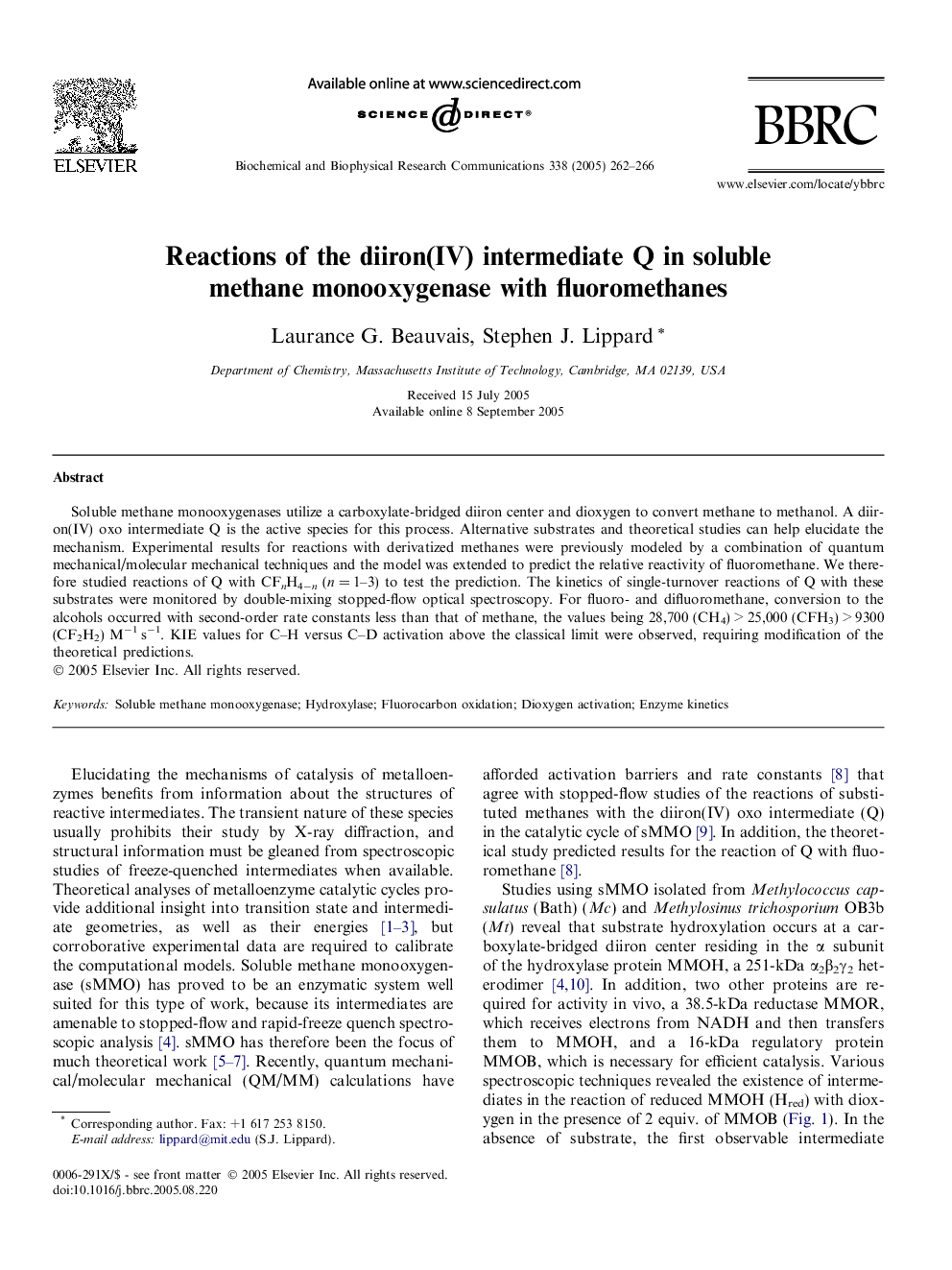| Article ID | Journal | Published Year | Pages | File Type |
|---|---|---|---|---|
| 10768154 | Biochemical and Biophysical Research Communications | 2005 | 5 Pages |
Abstract
Soluble methane monooxygenases utilize a carboxylate-bridged diiron center and dioxygen to convert methane to methanol. A diiron(IV) oxo intermediate Q is the active species for this process. Alternative substrates and theoretical studies can help elucidate the mechanism. Experimental results for reactions with derivatized methanes were previously modeled by a combination of quantum mechanical/molecular mechanical techniques and the model was extended to predict the relative reactivity of fluoromethane. We therefore studied reactions of Q with CFnH4ân (n = 1-3) to test the prediction. The kinetics of single-turnover reactions of Q with these substrates were monitored by double-mixing stopped-flow optical spectroscopy. For fluoro- and difluoromethane, conversion to the alcohols occurred with second-order rate constants less than that of methane, the values being 28,700 (CH4) > 25,000 (CFH3) > 9300 (CF2H2) Mâ1 sâ1. KIE values for C-H versus C-D activation above the classical limit were observed, requiring modification of the theoretical predictions.
Related Topics
Life Sciences
Biochemistry, Genetics and Molecular Biology
Biochemistry
Authors
Laurance G. Beauvais, Stephen J. Lippard,
